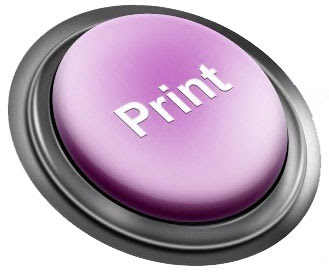Allowing your users to print your blog posts with just a single click is something that is pretty cool. On the other hand, almost all browsers provide the flexibility to print a web page by just going to “File” and “Print”. Different people have different choices and different people like to have a print feature on their blog posts for different reasons. You may just like to add a continent way. When users can print your posts with just one click then why they should be doing some complicated processes? In this article, we will show you how to add a quick print button to your Blogger blog.

The First thing you will be doing is to login into your Blogger Dashboard. Now After logging in, go to your blog >> Template >> Edit HTML >> Search for <div class='post-header-line-1'/> and just above it paste the following code. Once everything is done, press “Save Template” button to conclude the process.
...........................................................................
<div style="float: left; padding-left: 10px;">
<a href="javascript:window.print()" rel="nofollow">Print this Article</a></div>
...................................................................................................
apslogo
apslogo
Now to give your button a beautiful touch, you need to customize it with a bit of CSS. You can create any kind of image using any popular photo editing or deigning tool Like Photoshop and can simply apply the modest CSS to make it work. Here is a small example of how you can stylize your print it button.
................................................................................................
<div style="float: left; padding-left: 10px;">
<a href="javascript:window.print()" rel="nofollow"><img src="http://1.bp.blogspot.com/-vw5LhfD0cTI/UPLhsZx8ksI/AAAAAAAAAdo/w7Aqf4eEstA/s1600/images.jpg" /></a></div>
<a href="javascript:window.print()" rel="nofollow"><img src="http://1.bp.blogspot.com/-vw5LhfD0cTI/UPLhsZx8ksI/AAAAAAAAAdo/w7Aqf4eEstA/s1600/images.jpg" /></a></div>
...................................................................................................
apslogo
Congratulations: You have successfully learned how to add print it button in blogger blog. Not only that, but you can also stylize it according to your desire needs. You can also preview your posts to see everything is working in an order or not. We hope this tutorial has facilitated to understand how to add print it button in blogger. What are your judgments about adding a Print button to your blog? Does it is value to use these buttons or it is just waste of space? Let us know what you think about it.
Congratulations: You have successfully learned how to add print it button in blogger blog. Not only that, but you can also stylize it according to your desire needs. You can also preview your posts to see everything is working in an order or not. We hope this tutorial has facilitated to understand how to add print it button in blogger. What are your judgments about adding a Print button to your blog? Does it is value to use these buttons or it is just waste of space? Let us know what you think about it.

